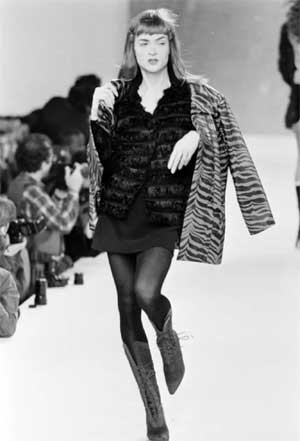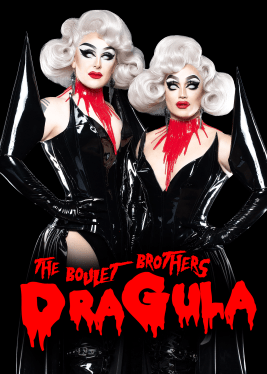The influence of drag on fashion and American culture is significant and multifaceted. Drag, which involves individuals dressing in clothing typically associated with the opposite gender for entertainment or self-expression, had a notable impact on various aspects of American society from the 1960s until now.
Case in point: J. Alexander used to go out to Studio 54 in drag. He’d first take the Bx13 bus then the 6 train down from his grandmother’s Bronx apartment, then hop into a cab at 59th Street. “I wanted to look beautiful and glamorous like a couture model,” he wrote in his 2009 autobiography, Follow the Model, but he didn’t want to be a drag queen. Miss J, as he became known, booked a Jean Paul Gaultier runway show in 1984, and afterward was signed to Elite Model Management in Japan with a $20,000 contract. He was 16, and modeled in drag on runways for years before becoming a runway coach for top-tier designers and the women who, many due to his tutelage, became supermodels. Later on, he also became known as a beloved runway coach and judge on America’s Next Top Model.
J. Alexander and other drag queens of the 1990s saw increased visibility and helped push drag culture in mainstream media. Shows like “RuPaul’s Drag Race” brought drag into the living rooms of millions of Americans, introducing them to the artistry and creativity of drag performers. RuPaul, in particular, became a prominent figure and an influential voice in both the LGBTQ+ and mainstream communities.
Drag queens are known for their bold and flamboyant fashion choices, and these influences could be seen in 1990s fashion trends. The decade witnessed an embrace of androgynous and gender-bending fashion. Elements such as bold makeup, exaggerated silhouettes, and theatrical styles made their way into mainstream fashion, challenging traditional gender norms.
Billy Beyond, while working in management at the Pyramid Club, modeled for designer Todd Oldham in the early 1990s. He had started modeling in the late 1980s when David LaChapelle photographed him in women’s clothes for a spread in Interview. “Everybody saw it, and that was it. ‘Who’s the new model?’ And I started getting other modeling jobs in drag,” Beyond said. “Once you’re in it, you can’t take it off. Sorry. I’m sorry, you’re not allowed… And beyond that, you will always be a drag queen. Always. Whether you like it or not,” he said.
Todd Oldham loved the precision of Billy’s look, he said, and thought he had a great walk. “When you’re doing a show or casting anything, or taking a photograph, it’s all just about what and who can deliver in these moments, how is the best way to create this. So there was never really like, ‘let’s put a man on the runway in clothing.’
That never ever, ever crossed my mind,” Oldham said. “There was just something about him, especially in that moment, sort of looking back and looking forward all at the same time. And he really just seemed to kind of capture it all for me and made what we made look so much better. Like he could really sell it, so to speak.”
In the 90s, Drag queens and drag culture were increasingly incorporated into mainstream entertainment. They appeared in music videos, films, and television shows. This exposure helped normalize drag as a form of entertainment and artistic expression. Drag culture promoted inclusivity and diversity. It challenged traditional beauty standards and celebrated individuality. This ethos had a ripple effect in promoting greater acceptance of diverse body types and appearances in American culture.
We can’t forget Divine
Divine passed away in 1988, but her legacy endures. She is remembered as a trailblazer in drag culture and an important figure in the history of LGBTQ+ entertainment. Her influence can be seen in the work of artists like RuPaul, who often acknowledges Divine as a source of inspiration.
Divine created an iconic drag persona that was larger-than-life, rebellious, and unapologetically provocative. Her over-the-top makeup, wigs, and costumes challenged conventional notions of beauty and femininity, paving the way for a more diverse and inclusive drag scene. Divine’s close collaboration with filmmaker John Waters (an Andy Warhol Protége) pushed the boundaries of taste and decency, and Divine’s performances in them were groundbreaking. She became known as the “Drag Queen of the Century” and a cult film icon.
Drag had a substantial influence on fashion and American culture by challenging traditional gender norms, inspiring fashion trends, and contributing to the broader acceptance of LGBTQ+ identities. Drag queens and kings played a significant role in shaping the cultural landscape of the decade, leaving a lasting impact on fashion and society.


Leave a Reply